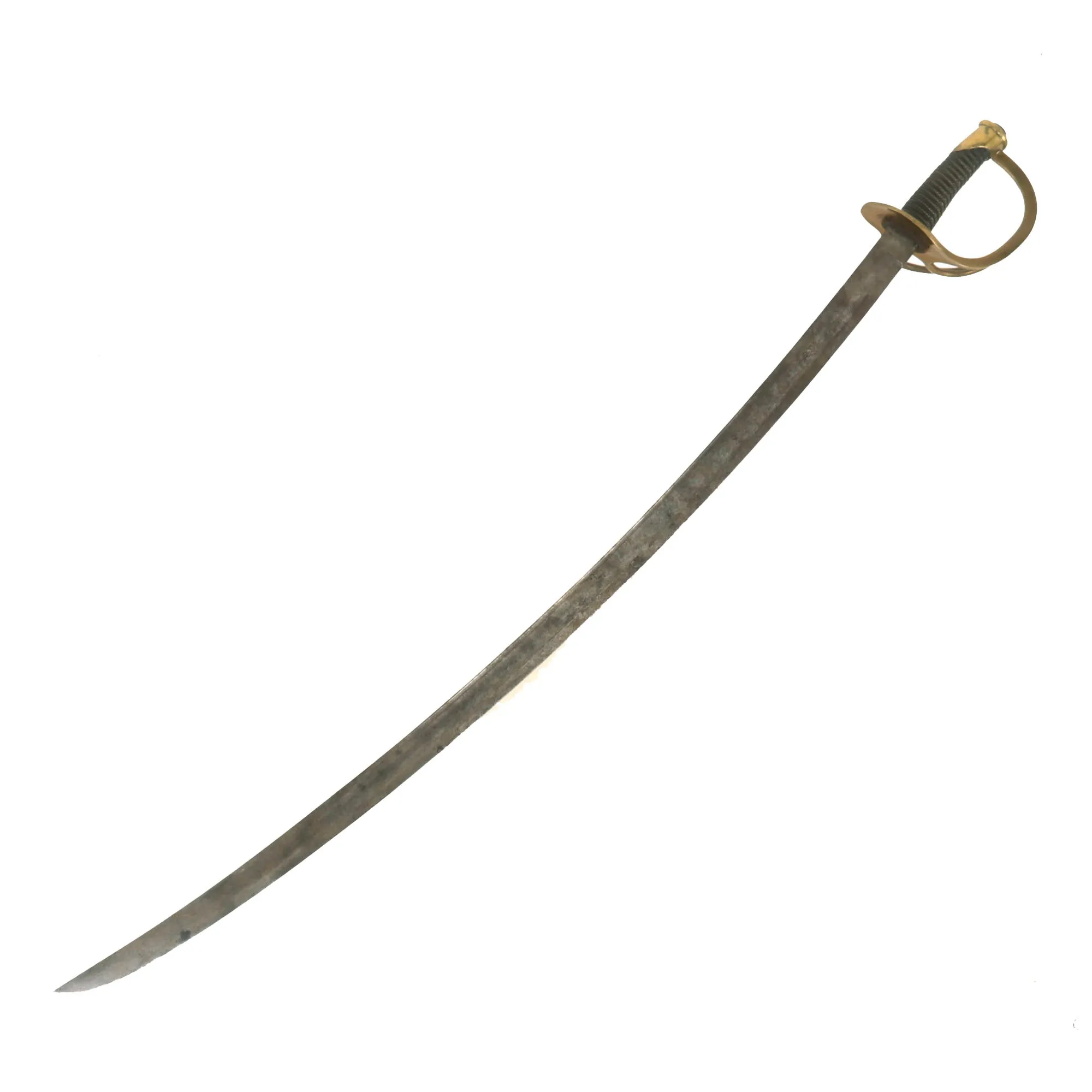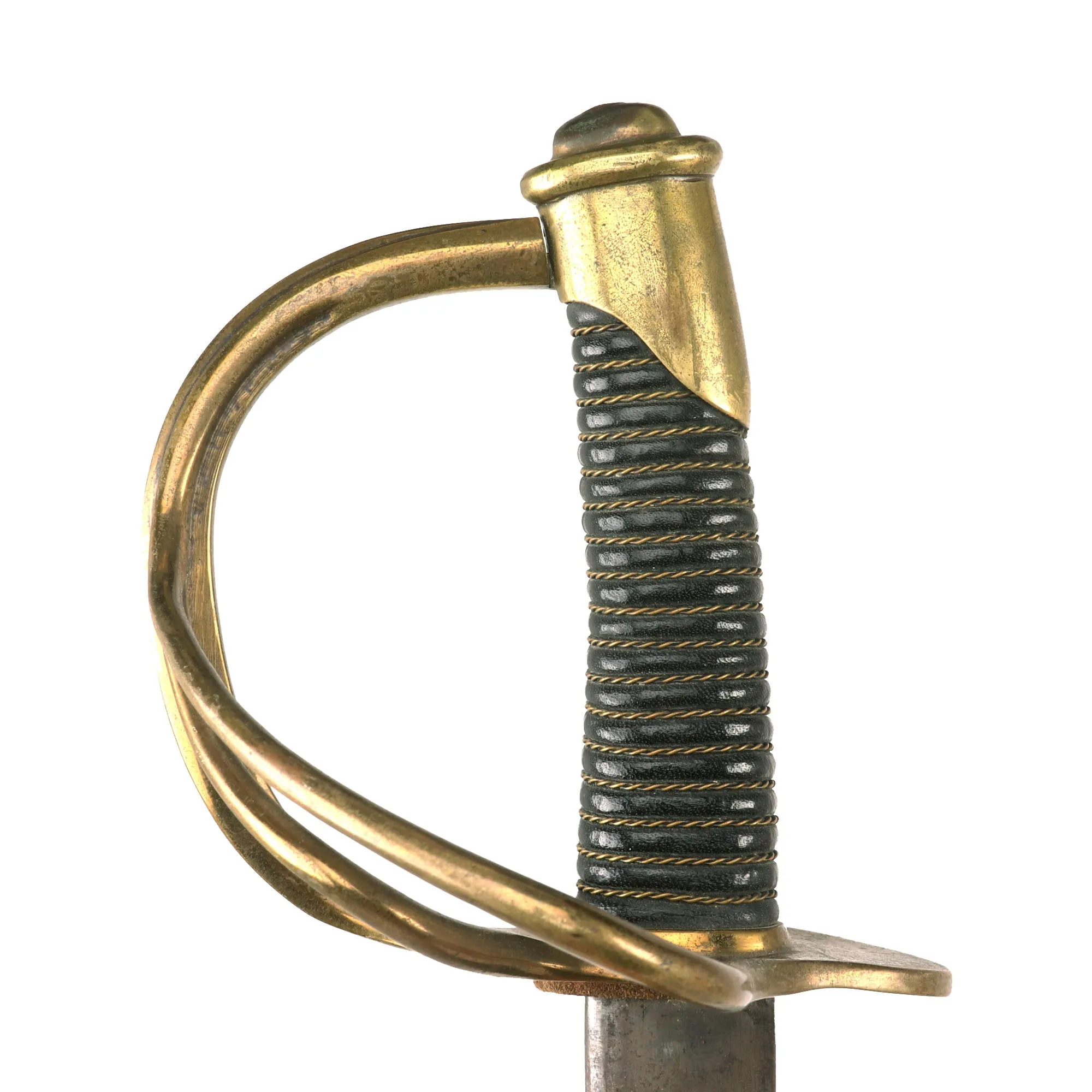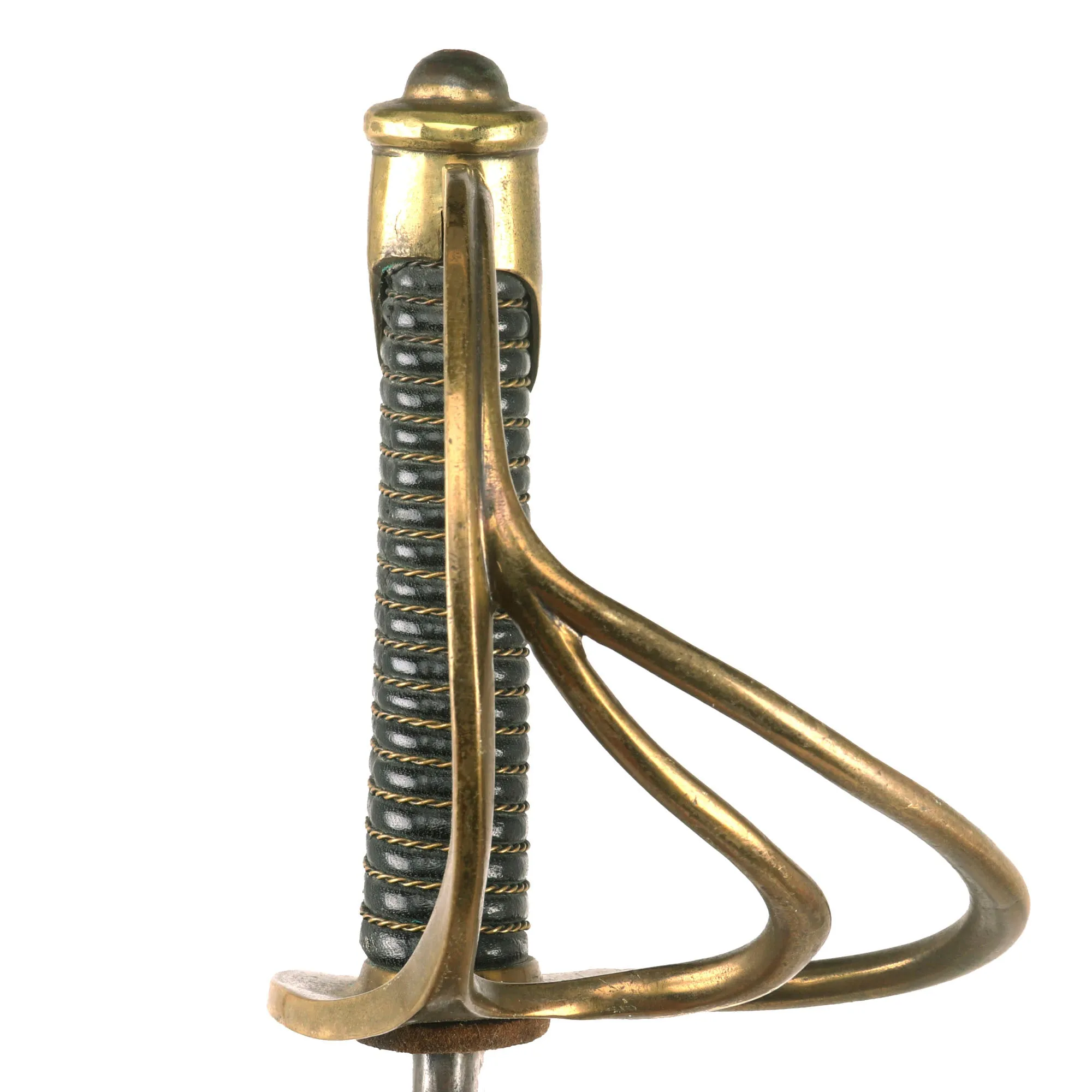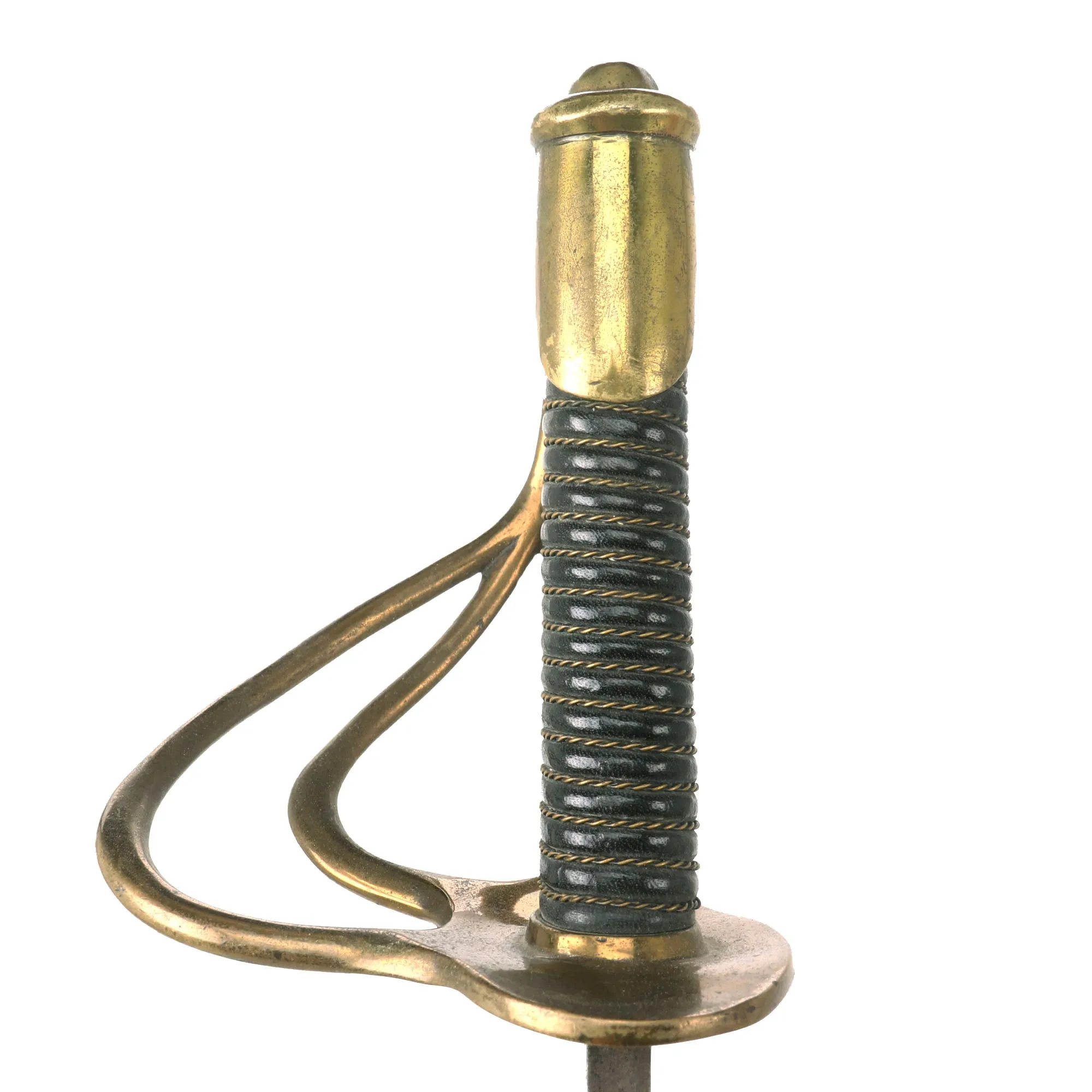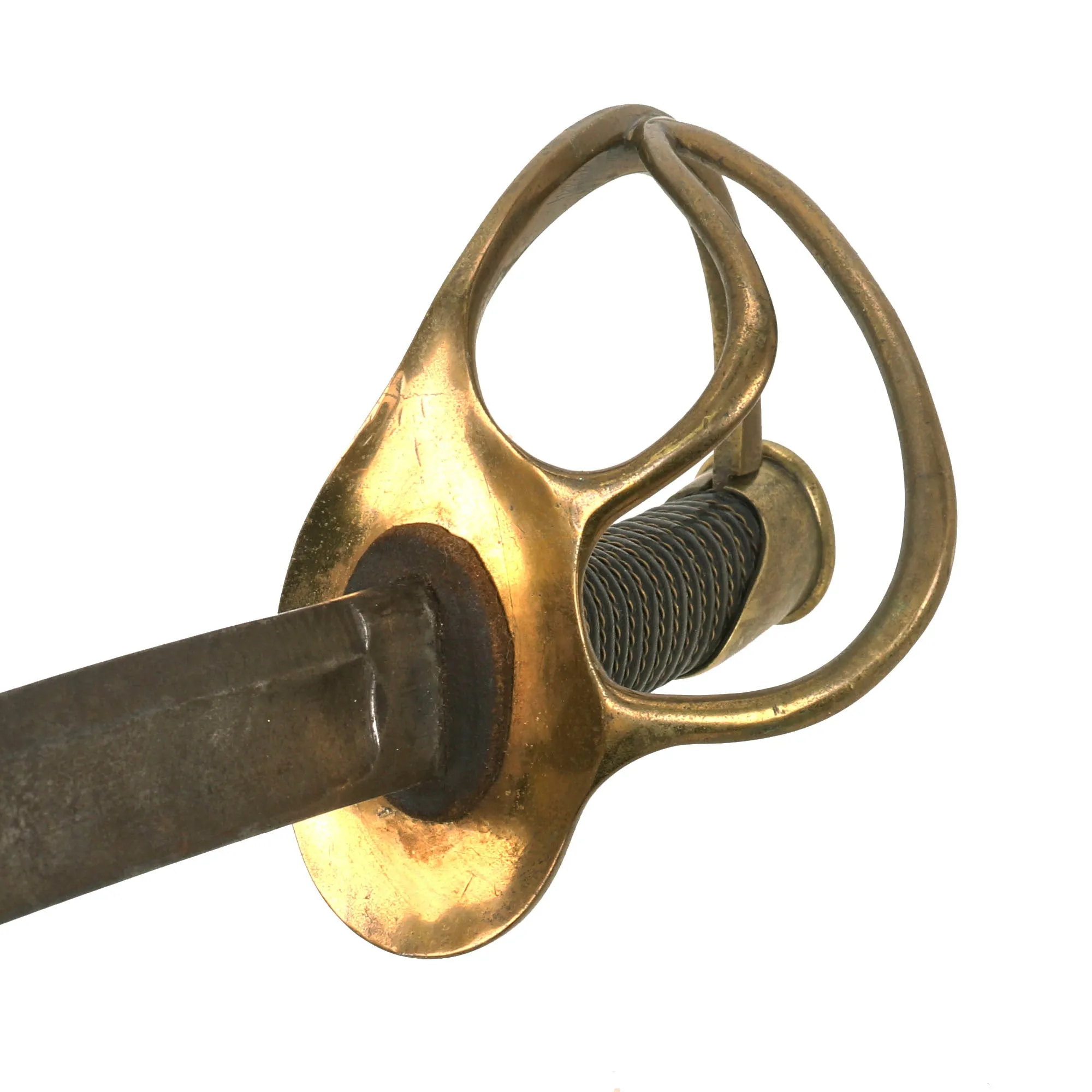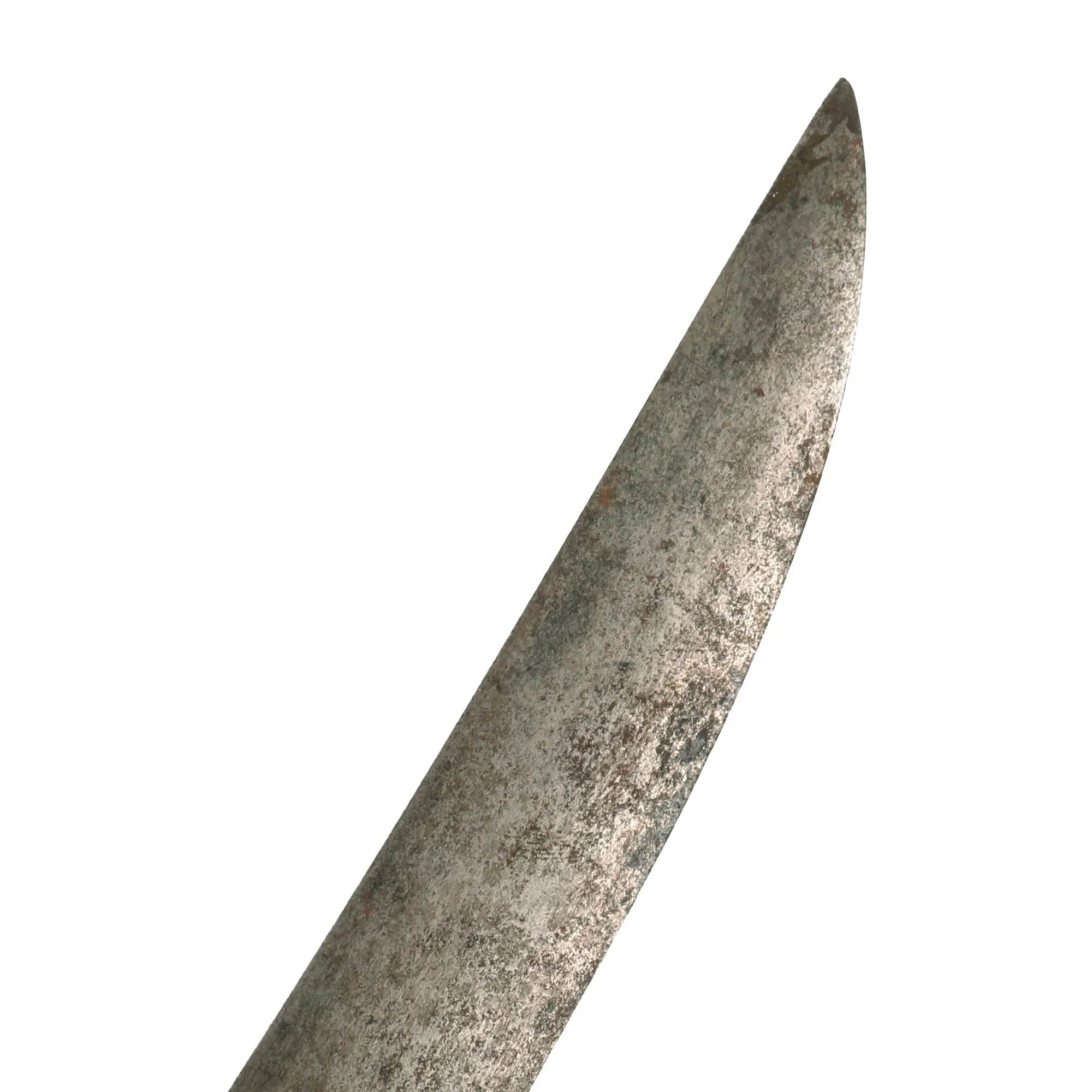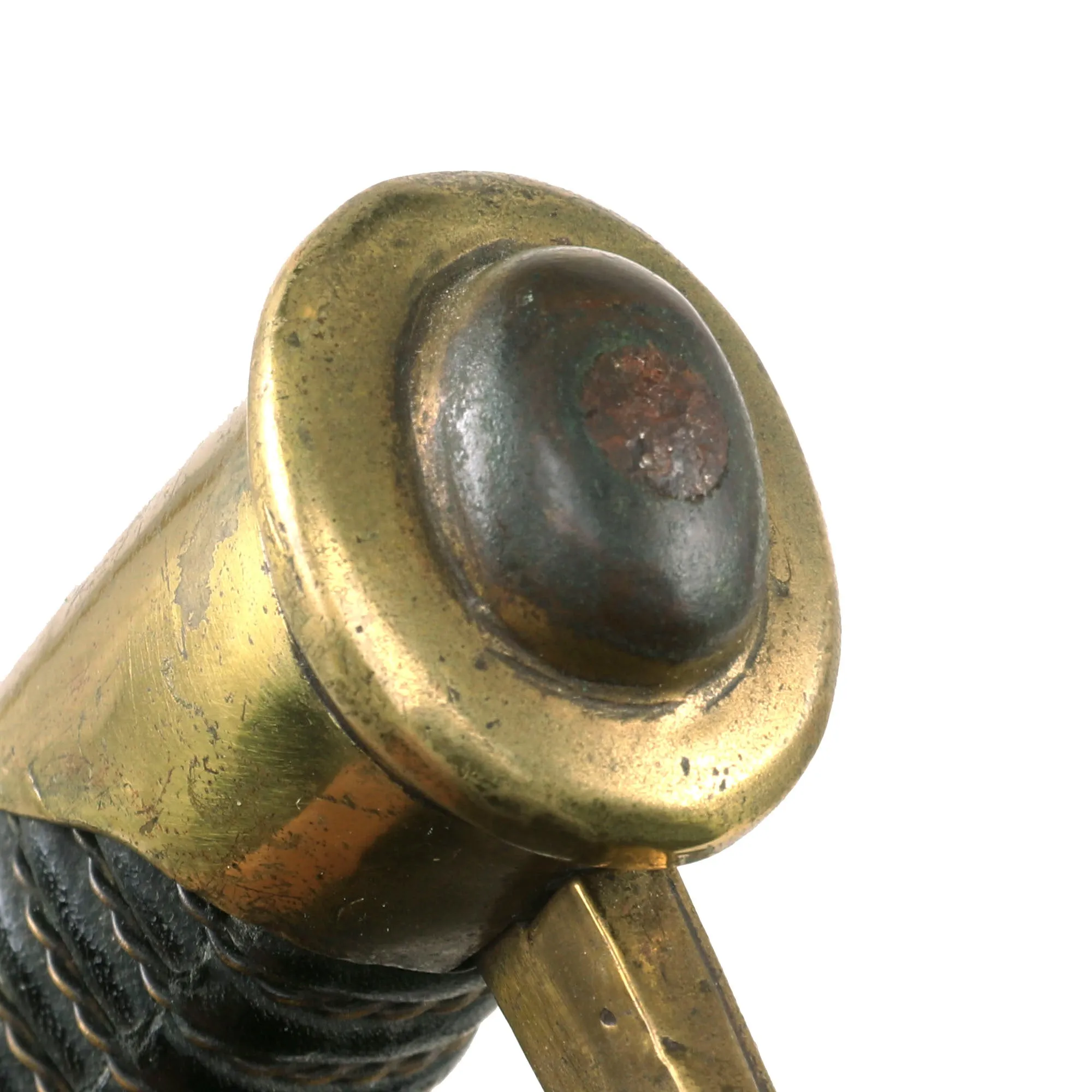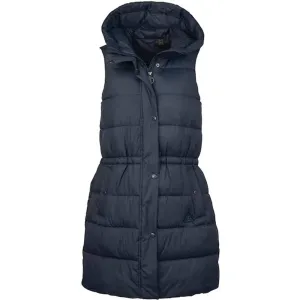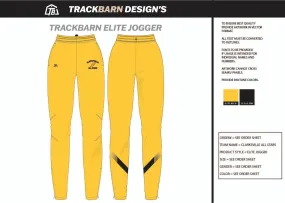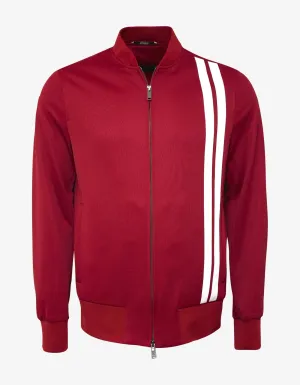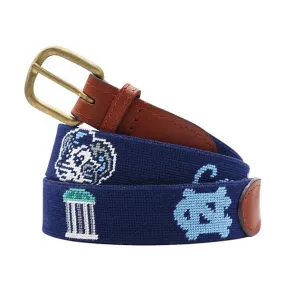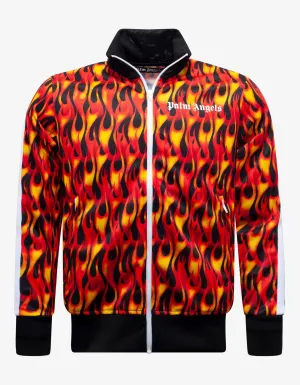Original item: Only One Available. This Heavy Cavalry Saber, known as "Old Wristbreaker" among troops, was designated the U.S. Model of 1840, but was widely used in the War between the States on both sides.
This fine example bears absolutely no markings whatsoever, which most likely indicates that it was an import during the U.S. Civil War, and the lack of markings obscures the origin. Both North and South imported Swords and guns from Europe and European Manufacturers, mostly in Germany, and they did not want the eventual "winning side" to be able to blame them for "supplying the enemy". This is a typical example that could have been used by the Confederacy or the Union.
This sword conforms closely to the M-1840 U.S. Heavy Cavalry pattern, and is approximately 42 inches in overall length. It has a very nice brass wire bound leather grip which is in solid condition, with much of the leather still displaying a lovely black color. The hilt bears a lightly patinated brass three branch handguard fitted to a wicked heavy curved blade measuring 35 3/4”. This example is missing its scabbard.
This actually is a very nice sword, with a very good condition blade that definitely looks to have been cleaned and polished over the years to remove oxidation. The edge looks great and the blade has a heavy dark patina, so it definitely did see use, but not an extensive amount. The hilt is tight on the blade, with no wobble, and the original leather blade buffer is in great shape. The hilt is in fantastic condition with the leather wire-wrapped grip showing little damage.
A great example of a Civil War Era M-1840 Wristbreaker Saber: Fully cleaned and ready to Display!
Approximate Dimensions:
Blade Length: 35 3/4”
Blade Style: Single Edged Curved Saber with Wide Fuller
Overall length: 41 1/4“
Basket dimensions: 5" width x 5” length
The Model 1840 Cavalry Saber was based on the 1822 French hussar's sabre. Unlike its replacement, the Model 1860 Light Cavalry Saber, the M1840 has a ridge around its quillon, a leather grip wrapped in wire (rather than grooves cut into the wooden handle) and a flat, slotted throat. It is 44" long with a 35" blade and weighs roughly 2.5 lbs.
The M1840 was designed for slashing and because of its heavy flat-backed blade was given the nickname "Old Wristbreaker." It was adopted due to the army's dissatisfaction with its predecessor, the model 1833 Dragoon Saber, the first cavalry sword adopted by the US Army.
The iron-hilted M1833 was based on a Napoleonic-era British sword used by heavy cavalry and reputed to wrap "rubber like around a man's head and was only good for cutting butter" An ornate gilded version of this earlier sword was used by General Philip Sheridan during the Civil War; Sheridan had its sheath engraved with the battles he participated in.
It was evident a replacement was needed so in 1838 the US Ordnance Dept bought British, French and Prussian swords and field-tested them. The troopers overwhelmingly preferred the French saber, and a copy of it was put into production in 1844. A total of 2000 were ordered and by 1846, 600 were in frontline service.
The 1840 saber was used during the U.S.-Mexican War by US Cavalry. The main contractors were Ames of Cabotville, Horstmann, and Tiffany but due to the large number of swords required at least 1000 were made in Germany by S&K and imported. Some troopers used Prussian sabers as an alternative, which in contrast to the M1840 had straight blades.
When production ceased in 1858 over 23,700 were made. During the US Civil War it continued to be issued to Union Cavalry as in the early years it was more readily available than the M1860. George B McClellan carried one at the front, keeping his regulation officer's sword for full dress occasions. Many were also used by the Confederacy including General Nathan Bedford Forrest who had both edges of his sword sharpened to increase combat effectiveness.





